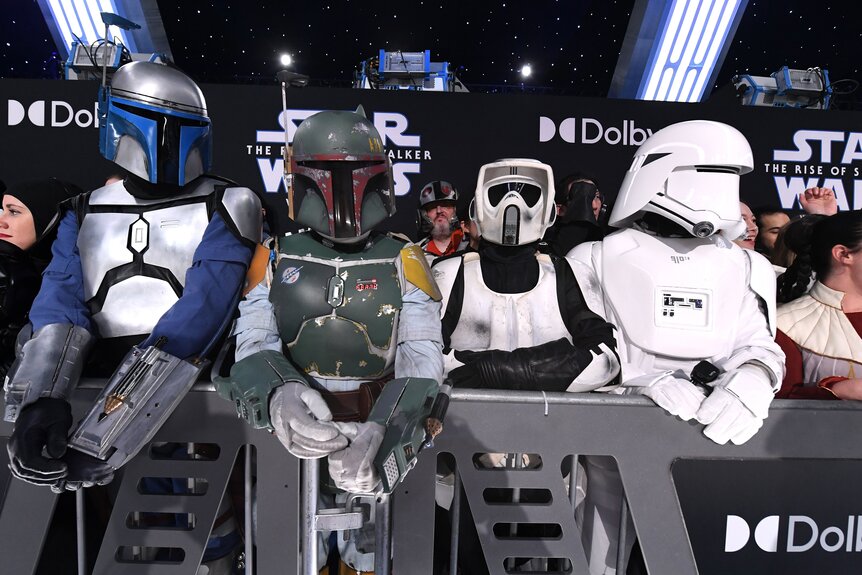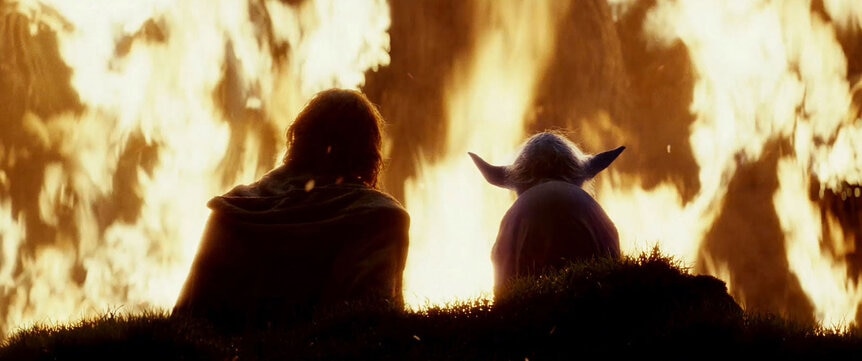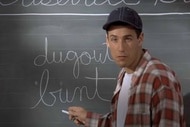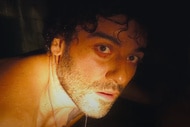Create a free profile to get unlimited access to exclusive videos, sweepstakes, and more!
What do Star Wars fans actually want — and what should Lucasfilm give them next?
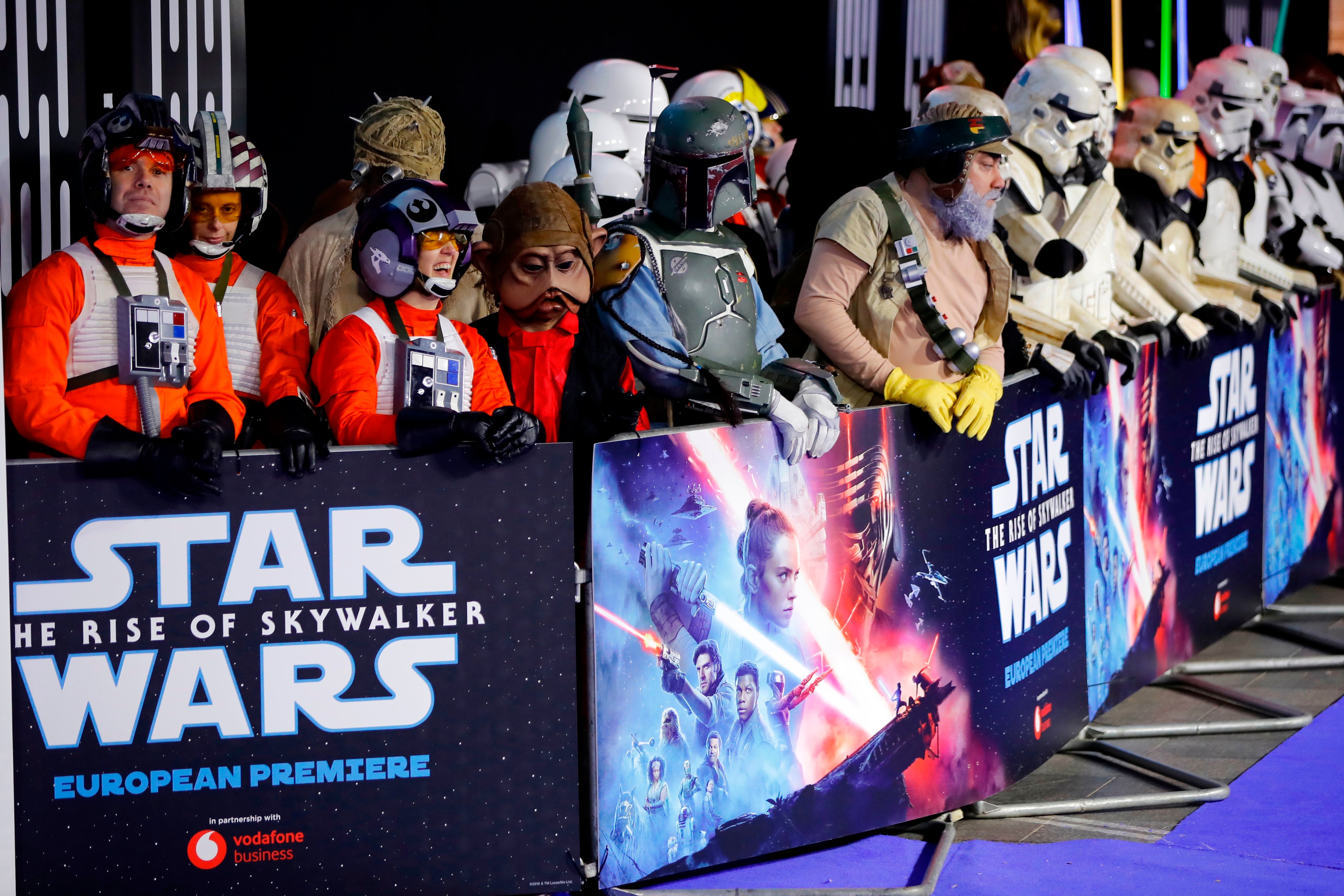
Quantitatively speaking, there has never been a better time to be a Star Wars fan. The Manichaean space saga has seen unprecedented expansion in 2019, with the debuts of the franchise's first live-action TV show and matching theme parks, a whole host of multimedia products, and, finally, Thursday's epic conclusion to the nine-movie Skywalker Saga. But definitive endings can also spark lingering questions, and in this case, fans are already speculating on what might come next.
Based on the last few years, that may well depend on what Star Wars fans want, a tantalizing and complicated question in and of itself.
To try to even guess at answers to either question, or at least attempt to understand their parameters, it helps to look at the recent past (even if Kylo Ren suggests letting the past die). Disney's acquisition of the franchise, which came with its late 2012 purchase of Lucasfilm, provides a tidy starting point for media historians and angry, conspiracy-minded fans on Twitter.
From that point, Lucasfilm execs hit the creative hyperdrive, producing five movies and The Mandalorian TV show, creating the Galaxy's Edge theme parks, and building up an extended universe of comics, video games, VR experiences, and novels. Three of the movies passed a billion dollars at the box office, and there is no doubt that The Rise of Skywalker, despite middling reviews, will blow past that mark soon enough. Financially speaking, Disney has certainly made its initial $4 billion seem like a bargain.
But it hasn't all been so easy. Lucasfilm president Kathleen Kennedy has fired several high-profile filmmakers from Star Wars movies (including The Lego Movie's Chris Miller and Phil Lord); the creators of Game of Thrones quit their planned big-screen trilogy; the series saw its first big-screen financial flop in Ron Howard's Solo: A Star Wars Story; and a small, vocal minority of fans have muddied up the conversation around the franchise, especially since 2017's The Last Jedi.
It's still an enviable record for any modern-day Hollywood production company, especially in an era of unprecedented competition and larger cultural divisions that inevitably touch and sometimes violently shake the entertainment industry. And Star Wars has weathered far rockier terrain — remember the prequels? — so there's little doubt that it won't continue to generally flourish. But it also now has to serve a colossal cross-section of fans, with competing demands from various factions and demographics.
**Spoiler Warning: There are spoilers for Star Wars: The Rise of Skywalker below**
Who is the audience?
Those who grew up with the original trilogy are well into adulthood — maybe not Boomers, but at least Gen-X — in many cases differ from millennials who watched the prequels and animated series unencumbered by the past. While it's a generalization, it's often a case of the former needing the series to stay the same, while the latter demanding to see a more progressive version of the galaxy far, far away. Each group also has attachments to particular characters, which renders evaluating their reactions to creative decisions even more complex.
Such was the case with The Last Jedi. That movie was as divisive as any critically acclaimed, $1.3 billion-earner can be. Some of the online vitriol stemmed from fans' unrepentant racism and misogyny — competent and badass women and people of color are still extra-threatening to many Americans, as we've so frequently been reminded this decade — while other complaints were born from a more gentle nostalgia for a fictional past.
"It's strange to me that ‘adults' talk about how much Star Wars meant to them as kids yet are so hypercritical of this new era and things they don't like about it like they are owed something," says Dave Scheidt, a comic book writer who has worked on major franchises such as Adventure Time and Avatar: The Last Airbender. "They never think about the little girl or black kid seeing someone in Star Wars who looks like them for the first time, you know? It's so important for kids to find themselves in storytelling."
"There are a lot of horrible people who hate The Last Jedi, and there are some people who just don't understand why Luke Skywalker wasn't the guy that [they] dreamt of as a little kid in the new movie," adds Jason Ward, the owner of the news site Making Star Wars and a leading voice in the fandom. "If Luke was [what people dreamed of as kids], there wouldn't be a movie. If there was no friction for Luke and nothing for Luke to do or grow back into, there just wouldn't be a story. And they just don't see that. Because they don't see story, they see character."
Beyond visceral hatred for heroes Rey (Daisy Ridley) and Rose Tico (Kelly Marie Tran), many of the complaints about The Last Jedi center on the revelation that Luke Skywalker failed in his later Jedi missions and retreated from his responsibilities. Filmmaker Rian Johnson's latter-day version of Luke was embittered and retired to the isolated planet of Ahch-To, determined to end the vaunted Jedi religion. He later reverses course, but sacrifices himself in the process, a complex (if still classic) hero's journey that denied longtime fans the swashbuckling Jedi Master they'd read about in decades' worth of books, comics, and, no doubt, fanfiction.
"The Star Wars storytelling is burdened with how much we all love the original films; we had so long to study those films and think about those characters that deviation from our interpretation is deemed wrong," says Steele Saunders, a prominent Star Wars podcaster. "There's too much weight on these characters."
The pushback on the movie split the fandom down its previously subtle fault lines. There were more places to talk about Star Wars than ever, but some aren't exactly safe spaces. For every Jedi Temple, there is a discourse Mos Eisley, filled with assorted motivations, short tempers, and quick triggers.
"I felt really sad after The Last Jedi, not because I disliked the movie, but because I loved the movie, and navigating online spaces was exhausting," says Lindsey Romain, an editor at Nerdist. "Luckily, when I started seeking out more female voices in the fandom, I found a whole world where there was great appreciation for the new films and a lot of great analyzing and conversation. There are so many great, positive voices in the fandom, you just have to look. But posting anything about Star Wars invites a lot of toxicity and tiring chats, too. It's really a gamble."
The Rise of Skywalker plays as if it was engineered to address all of the nostalgic fan concerns that sprang out of The Last Jedi, from Rey's origin story to the final character arcs of old heroes and villains.
The return of Emperor Palpatine (and its familial implications) has been most divisive, for many reasons. Some people, especially critics, preferred her as a "nobody," as The Last Jedi suggested. Ward says some others wanted Luke Skywalker to be Rey's father, and there were plenty of other desired outcomes floating around the internet, as well. Whether Abrams' decision was the right creative move is now being hotly debated by critics and fans (or, critics vs. fans), which goes to show just how divided the whole conversation has become. There is no right or wrong answer, but you wouldn't know it from the discourse. Which is part of the fun of Star Wars, as long as it's respectful.
And yet, there is now a blank slate of sorts, with no immediate story questions to answer — just larger ones about the future. First and foremost, what can bring most Star Wars fans together? Is that even possible? Should it even be a goal?
Digging deeper
In between the three new entries into the Skywalker Saga, Lucasfilm released two movies, dubbed "Star Wars Stories," that zoom in on moments referenced but left unseen during the first six movies. The first, Rogue One, focused on the gang that stole the plans to the Death Star in the days leading up to the action depicted in A New Hope. The other was Solo, which told the smuggler-turned-hero's origin story.
The former invented new characters and was a billion-dollar hit despite production problems; the other, which also had production issues, recast perhaps the most iconic hero in the franchise's history and suffered swift rejection.
So, returning to familiar spaces, but not the most famous faces, is one way to go.
"I think Rogue One and The Mandalorian show how you can successfully connect to the main events of the original trilogy while also creating good original stories, characters, content," says Versha Sharma, a senior correspondent for NowThis News and a lifelong Star Wars fan. "With the exception of young Lando, Solo was not a good example of that. Stick with the actual side characters (more young Lando!), not the well-developed and loved heroes, or fresh characters like The Mandalorian."
The two cartoon series, The Clones Wars and Star Wars Rebels, focused on some core characters — Obi-wan and Anakin were at the center of The Clone Wars — but also introduced new and soon-to-be beloved heroes, such as Ahsoka Tano, one of the most cosplayed characters in the entire series. As Scheidt and Romain pointed out, the series didn't change the overall trajectory of the movies, but they filled in important blanks, especially in the second series, fleshing out characters and exploring deeper concepts like the Force.
The Mandalorian has quickly become perhaps the gold standard for exploring new elements of the pre-existing Star Wars timeline to universal acclaim. Set sometime between The Return of the Jedi and The Force Awakens, it follows a mysterious bounty hunter on a Lone Wolf and Cub odyssey with an adorable toddler named the Child but known to an ecstatic internet as Baby Yoda.
"I imagine that'll be a template for things going forward: a tangibly familiar look and feel, with species and concepts we recognize but in a new context," Romain says. "The titular Mandalorian is like Boba Fett, but isn't Boba Fett. The baby is like Yoda, but isn't Yoda. I can see them plucking out other recognizable idols in the universe and spinning them into new properties."
In a similar way, The Last Jedi didn't receive criticism because it was poorly made; it was instead all about the specific character choices.
"I feel like some fans would've enjoyed The Last Jedi more if the old grizzled Jedi master was someone other than their lifelong hero," says Saunders.
Sharma pinpoints another essential element of The Mandalorian: its relatively small stakes, especially as compared to the main movie trilogies thus far.
"[They should make] more standalone stories where the outcome is not necessarily going to decide the fate of the galaxy/the eternal battle between good and evil, but still features compelling characters dealing with whatever obstacles come their way," she suggests.
Old Stories Made New Again
Ward says he expects Lucasfilm to ultimately continue to make movies about some of the characters in the most recent trilogy, especially given how much fans seem to love Poe (Oscar Isaac), Finn (John Boyega), BB-8, and a number of others (the antipathy toward the women characters should hopefully not prevent their future participation).
"My assessment is that it's going to simply do its best to wrap everything up in the Skywalker saga, and that there will be loose threads, and then those loose threads will probably spawn more Star Wars properties down the road," he says. "And I don't think anybody is really going to be mad about that in the big picture."
That may well happen down the road, as Ward suggests, but indications are that Disney will go in different directions for now. That doesn't mean, however, that it'll necessarily be totally new ideas.
While Disney bought Lucasfilm, it announced new movies, sure, but it made another big announcement: The decades' worth of ancillary media stories produced over four decades were no longer official canon. Instead, they were banished to a non-canonical Legends universe, in order to create a blank slate for new generations of Lucasfilm creative executives. But the company couldn't Jedi mind-trick the world into forgetting those old stories, many of which filled voids during times of big-screen neglect and became near and dear to fans' hearts.
In a very unscientific call for suggestions on Twitter, fans asked to chime in on what they'd like to see in future Star Wars episodes focused a lot of their requests on different aspects of the Legends stories. They were particularly interested in seeing Knights of the Old Republic and other stories set many years before any of the movies, exploring ancient Jedi myths and the origins of the Sith.
Other respondents asked for adaptations of more recent, in-canon books, such as Claudia Gray's Lost Stars, while still others wanted either stories set far in the future or on distant worlds, with narratives that are "small and detailed," with stakes far more limited, in conflicts between new characters.
"I think that when something new does happen, when it's something that doesn't have any connection to anything, whether it's a hundred years after the Rise of Skywalker or a thousand years before, I think that that's when the creatives will probably be able to really tell a story where it's judged completely on its own merits," Ward says.
Genre and style
It's not just about stories and particular characters, either. Star Wars has in its 11 movies and three animated series jumped among several subgenres; sure, it's always a sci-fi space opera, but some have leaned into the western (take A New Hope and The Mandalorian, for instance), while others are futuristic robot clashes (Attack of the Clones), and some lean heavier into the fact that George Lucas intended to make children's movies (see: Return of the Jedi and The Phantom Menace) than others.
When considering the future of Star Wars, fans and experts are just as eager to see different tones and genres as they are any particular heroes or epochs.
"I'd love to see different genres within this world than just western, samurai, and war movie – I love all of those things, but they feel like the only source of inspiration in that world right now and it's getting a little stale," Romain says. "Give us a deep weird fantasy, give us a horror movie, give us an epic romance, even a straight-up comedy or a noir. I think you can have a lot of fun with that universe as a template, so more than anything I'd like to see them explore those possibilities."
Ward zeroed in on the romance element; the conversation took place before press screenings for The Rise of Skywalker, so while he focused in part on fans' unreserved desire to see Kylo Ren and Rey get together, his point was about the franchise's larger lack of adult emotional entanglement.
"I think it speaks to a desire for there to be actual romance in Star Wars — if you get into the most current films, the only romance that's really been in there has been Han Solo and Kira [in Ron Howard's Solo: A Star Wars Story]," he says, noting that fans have also expressed dismay that Jyn Erso and Cassian Andor, the two main protagonists in Rogue One, did not knock boots or even give off a hint of spark in the heat of their battle to steal the plans to the Death Star.
"It's moved into this space where people are actually wanting, if not demanding, sometimes violently almost, that romance be included in these films, in a much heavier way," Ward adds.
It's unlikely that The Rise of Skywalker will have satisfied many of those smooch-starved fans; there was one Reylo moment, but he wound up literally ghosting her, while Rose Tico's grounding deprived her and Finn of any further romantic exploration. The popular fan demand for the bromance between Finn and Poe to become more than friendship also fell on deaf ears, as Finn was focused on his new platonic friend Jannah (Naomi Ackie) and Poe tried (and failed) to rekindle an old flame with another new character, Zorii Bliss (Keri Russell).
Beyond any shipping wars and character origins, the main fault line in the new Star Wars saga has been over its increased diversity, as the reaction to Finn, Rey, Rose, and Admiral Holdo made very clear. The Rise of Skywalker tried to paper over a lot of fan outcries, but Abrams — with the approval of Kathleen Kennedy — introduced even more diversity, including the franchise's first LGBTQ kiss. It felt patronizing to some people, to see it go to minor characters instead of, say, Finn and Poe, but it was still deliberate, and hopefully the start of something bigger.
Even in a galaxy set a long time ago, the future is inevitable.
